10 yoga stretches for beginners that will boost flexibility
A yoga instructor says you should master these 10 beginner yoga stretches if you’re new to the practice
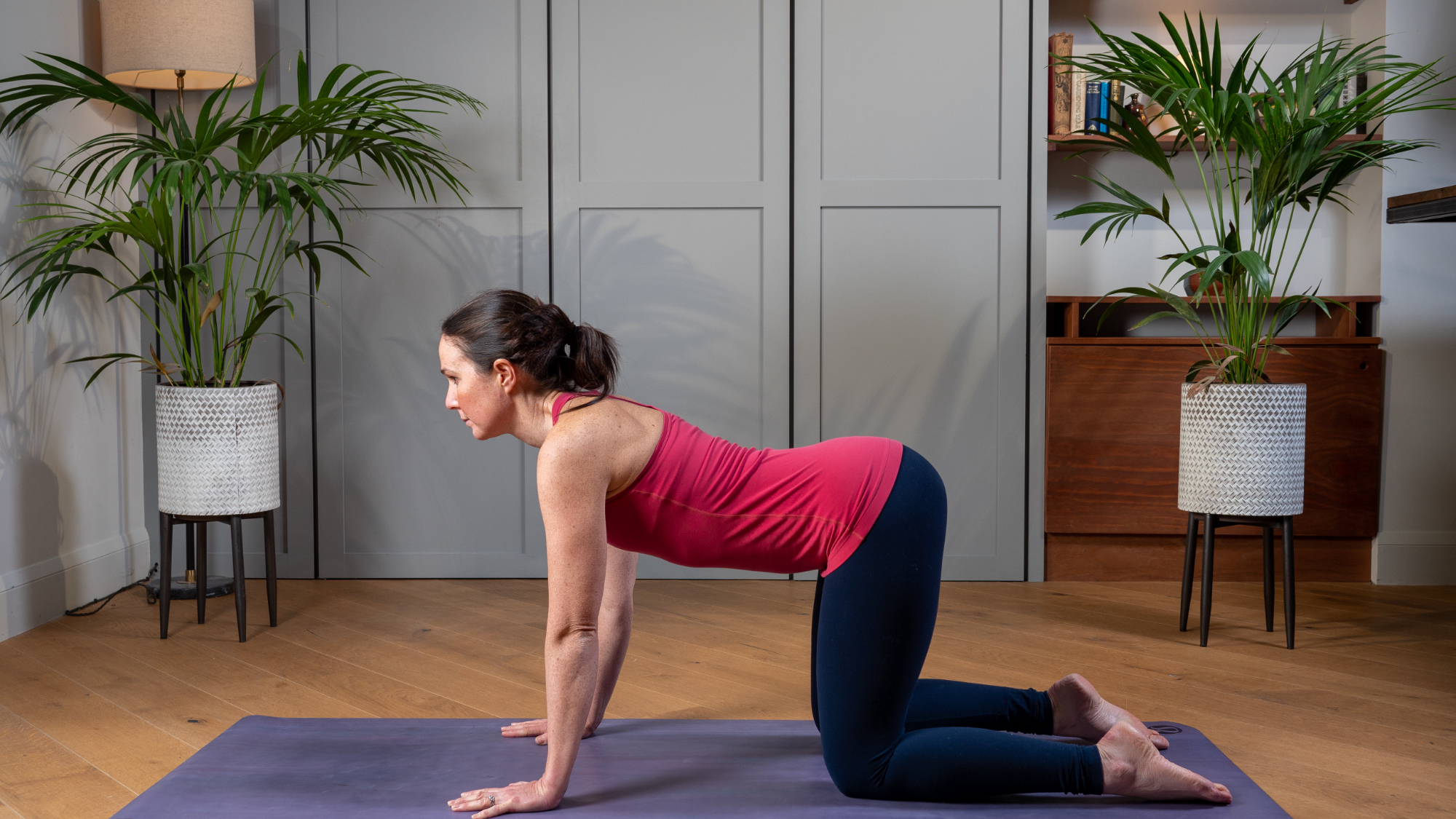

Some basic yoga stretches crop up in nearly every yoga flow: cat-cow, downward dog, child’s pose, and so on. These foundational moves are the perfect starting point for yoga beginners. They can be adapted to suit most fitness levels and will boost your flexibility.
Certified yoga teacher Felicity Wood has created this 10-pose flow for Fit&Well, which weaves some of these foundational moves together. The routine doesn’t require any equipment other than a yoga mat and it can be done by anyone, even if you have limited flexibility.
"You wouldn't say you have to be able to play Mozart to take music lessons, and it's the same with yoga—you don't have to be flexible to start," says Wood. "Yoga is not about being good or bad; it's about being with your body without trying to change anything."
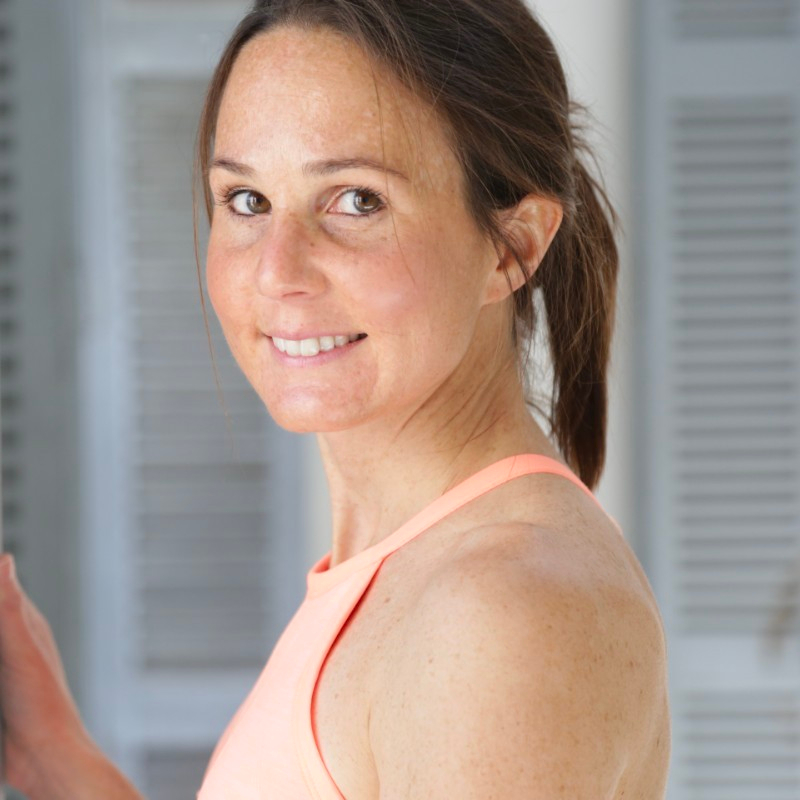
Felicity Wood is an award-winning yoga teacher and founded the on-demand yoga platform Felicity Wood Yoga. She has completed 1,000 hours of training, including the 500-hour Yoga Alliance certification, and began teaching in 2014. Her mission is to make yoga feel less intimidating and more accessible to everyone, regardless of whether they can touch their toes.
Yoga stretches for beginners to boost flexibility
Wood's 10-move routine is designed to improve your flexibility and mobility. This will help you get used to the positions, gradually building strength and confidence as you repeat the poses.
Wood has offered instructions and tips for each move to get the most from these stretches. And if you want another short routine to add to your practice, this core yoga session strengthens your mid-section to develop stability.
1. Cat-cow
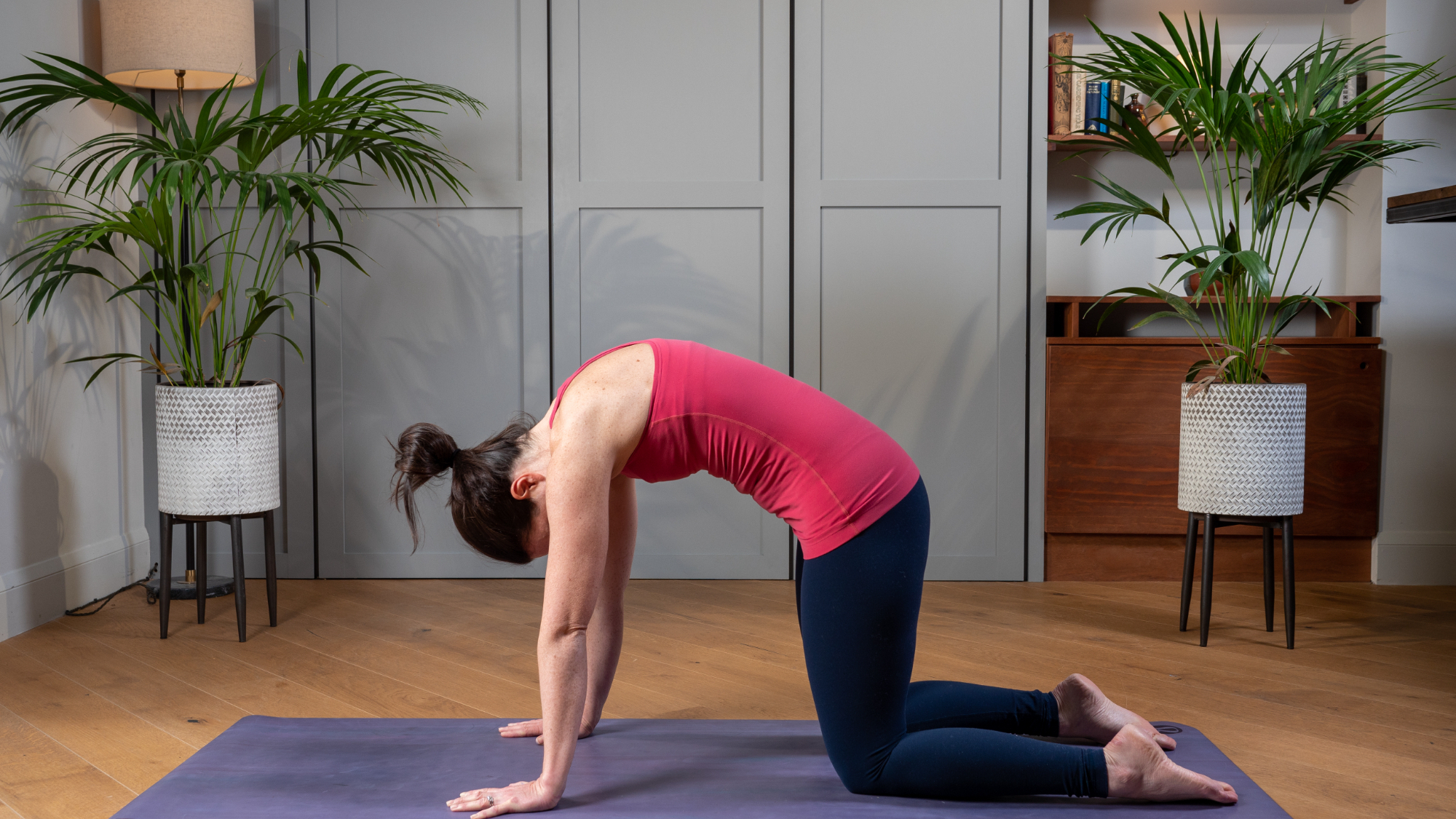

Cat-cow is a gentle yoga stretch for beginners and helps develop an awareness of your breath, allowing you to tune in to how you feel, and offers a whole back stretch for improved spine mobility.
- Start on all fours in a tabletop position with wrists in line with shoulders, knees under hips, and knees hip-width apart. Feel your fingers spreading and pushing into the floor.
- For cat pose, inhale as you look forward, bringing your navel towards the floor, with sitting bones lifting.
- Exhale to cow pose, rounding the spine, bringing chin to chest, and sitting bones under as you press the floor with your hands.
- Repeat both poses five times, synchronizing movements with your breath.
2. Puppy pose
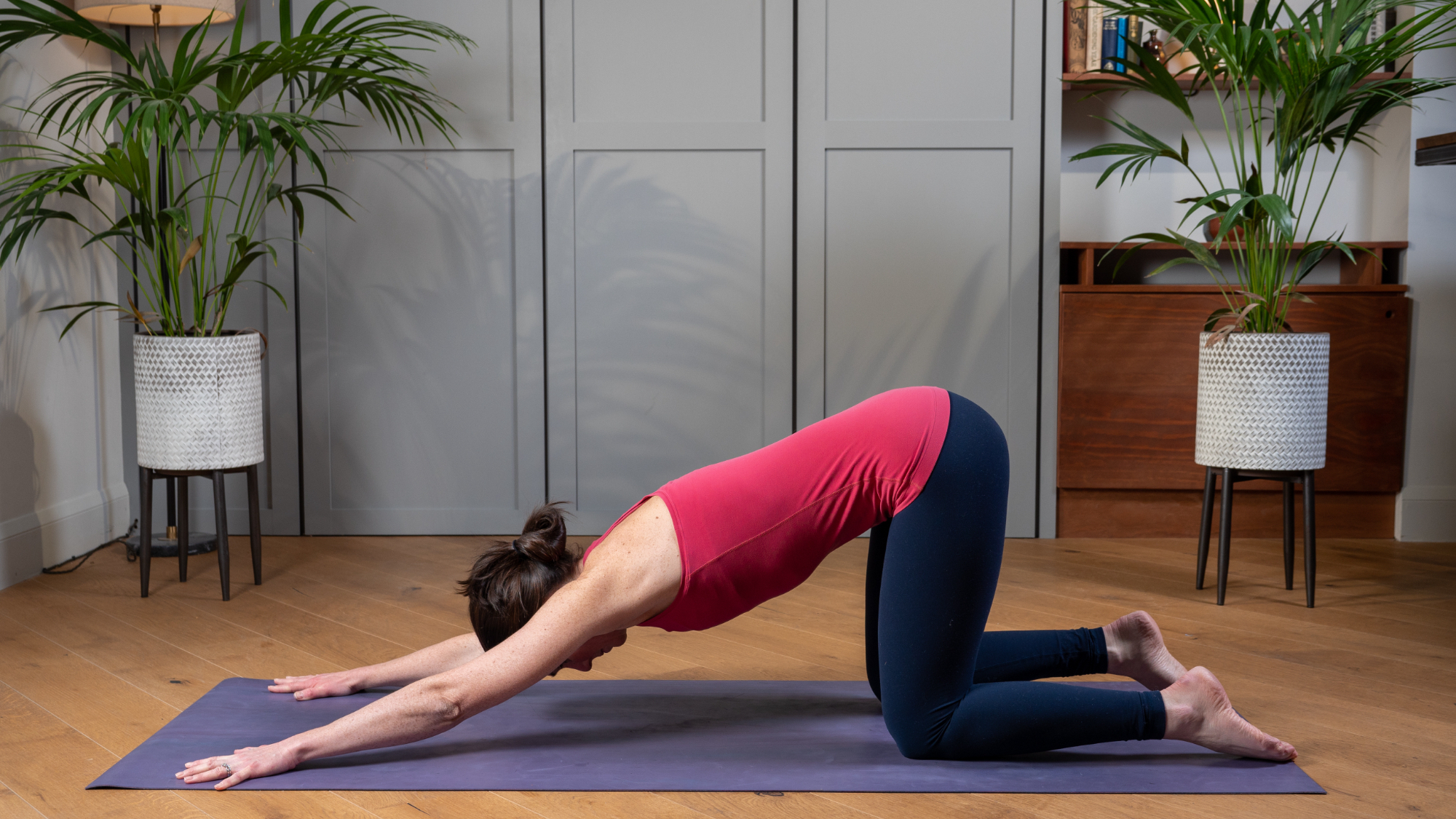
The puppy pose is an excellent warm-up pose for the well-known yoga stretch, downward dog. It helps lengthen your spine and opens your chest and shoulders.
Get the Fit&Well Newsletter
Start your week with achievable workout ideas, health tips and wellbeing advice in your inbox.
- Start on all fours in a tabletop position with wrists in line with shoulders, knees under hips, and knees hip-width apart. Feel your fingers spreading and pushing into the floor.
- Keep your bottom in line with your knees as you take your hands a giant step forward. Your hands can be as wide as the mat, with fingers spread wide.
- Press the floor away from you, feeling like you are gently pressing your chest towards the mat.
- Stay in this position for five breaths.
3. Low lunge
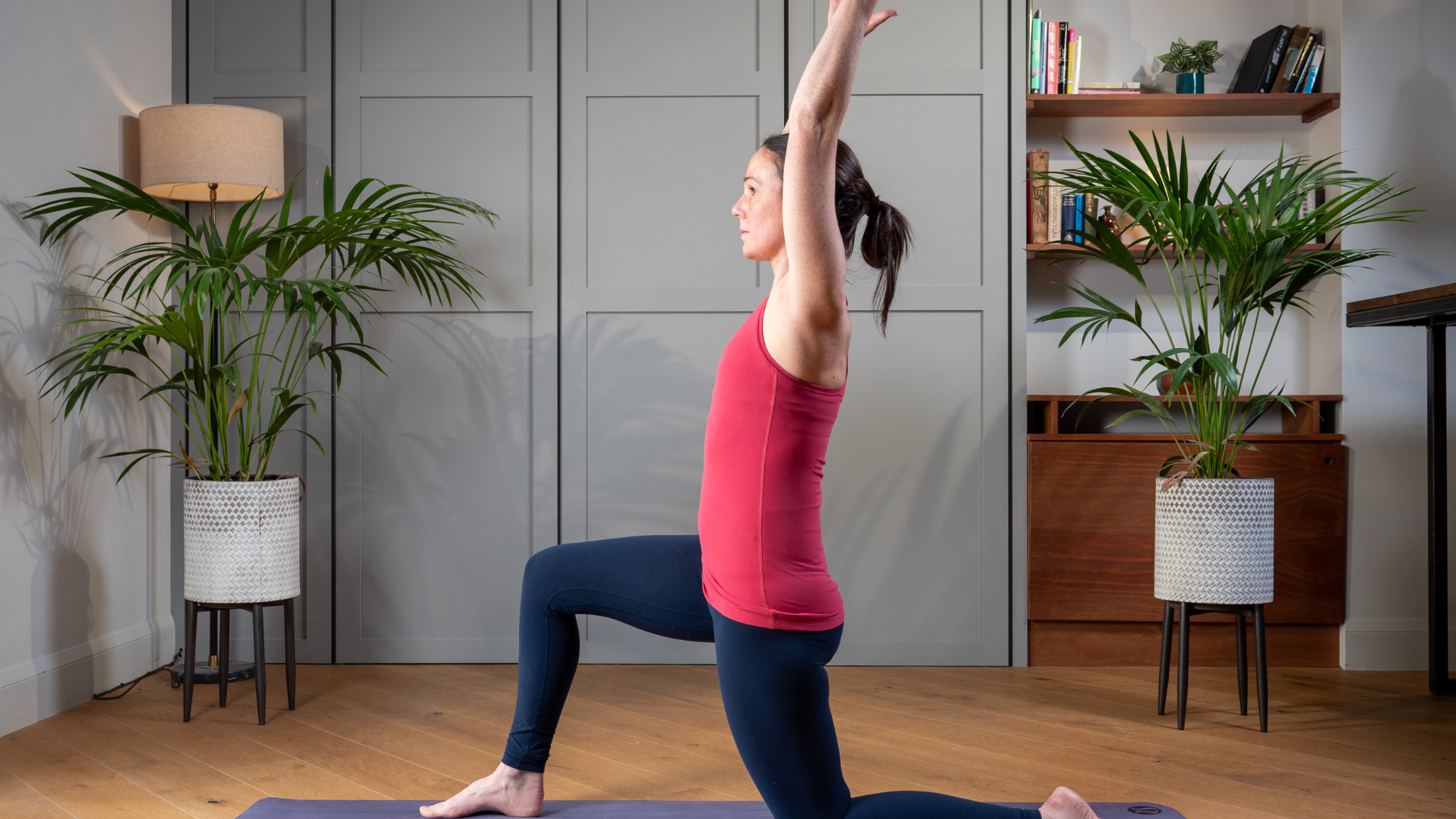
Lunges are a classic workout move, and a fundamental part of several yoga poses, including the low lunge. This position helps stretch your hip flexors and quads, which is helpful if you've been sitting down for a while.
If you feel pressure on the back knee, roll your mat slightly to double up or use a cushion or blanket.
- From a tabletop position on all fours, step your right foot forward toward your right hand into a low lunge, keeping your left knee on the ground.
- Bring your arms above your head, keeping them wide apart to make space for the shoulders.
- Stay for a couple of breaths and swap sides.
4. Child's pose
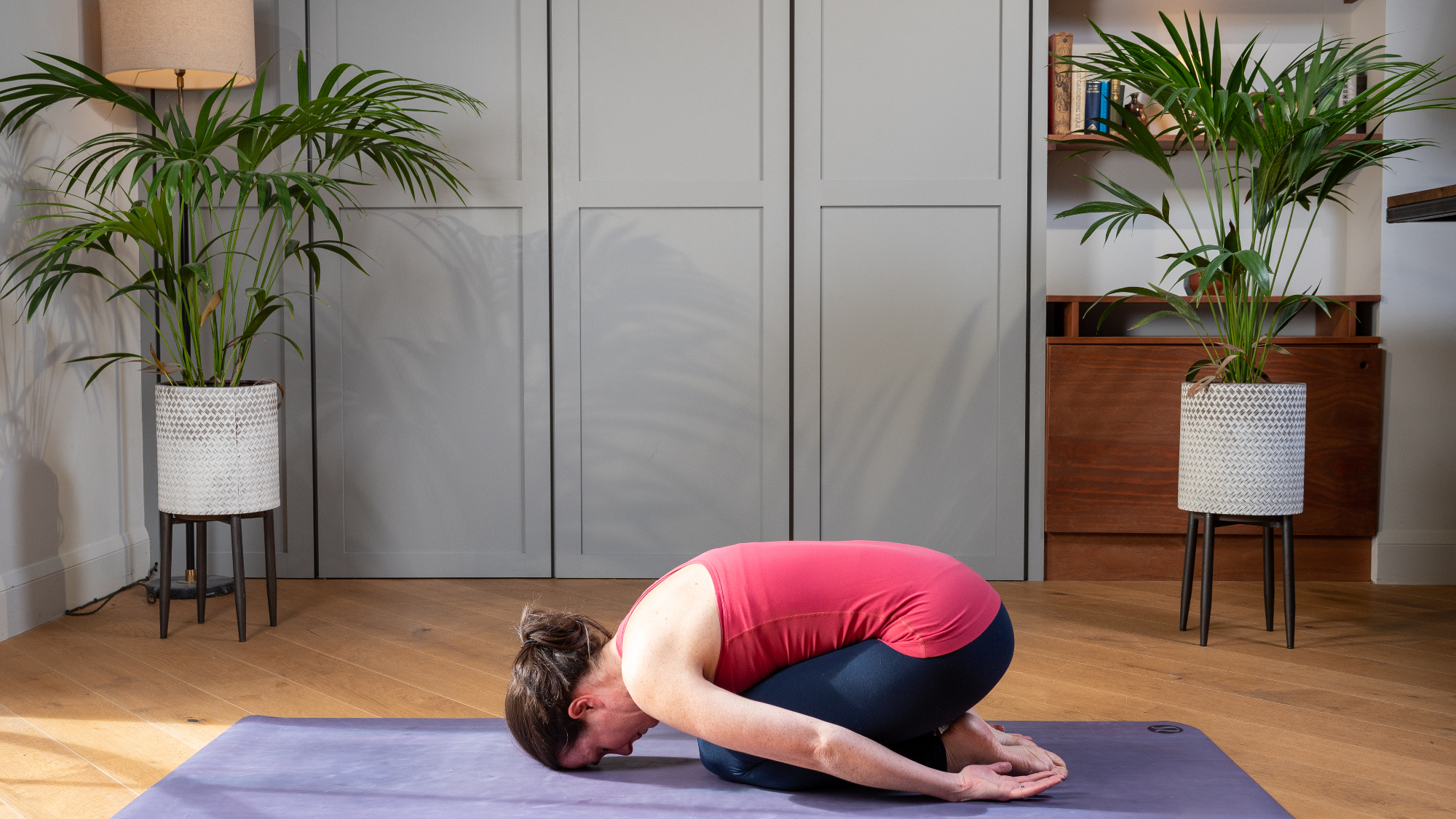
The child's pose is a restorative resting pose that promotes spinal flexion and allows your back and shoulders to stretch. It's also an ideal exercise for the end of your regular workouts.
- Bring your bottom back towards your heels from the tabletop position on all fours. Legs can either be together or separated.
- Fold over your thighs and bring your forehead to the floor or a cushion.
- Bring your arms alongside your body with palms facing up.
- Rest here for a few breaths.
5. Downward dog

For a good reason, this is one of the most famous yoga stretches for beginners and experienced practitioners—downward dog benefits your whole body, strengthening your arms, lengthening your spine, and giving your hamstrings and calves a stretch.
- Come to all fours with your knees hip distance apart.
- Take your hands a big step forward, landing mat-width apart with your fingers spread.
- Tuck your toes under and lift your knees, then lift your bottom up towards the ceiling. Keep a good bend in the knees (it doesn't matter if your heels don't touch the floor) as you press the floor away with your hands. Make sure there is even weight distribution between hands and feet.
- Alternate bending one knee and then the other to stretch out the back of the legs.
- Hold the pose for five breaths.
6. Standing forward fold
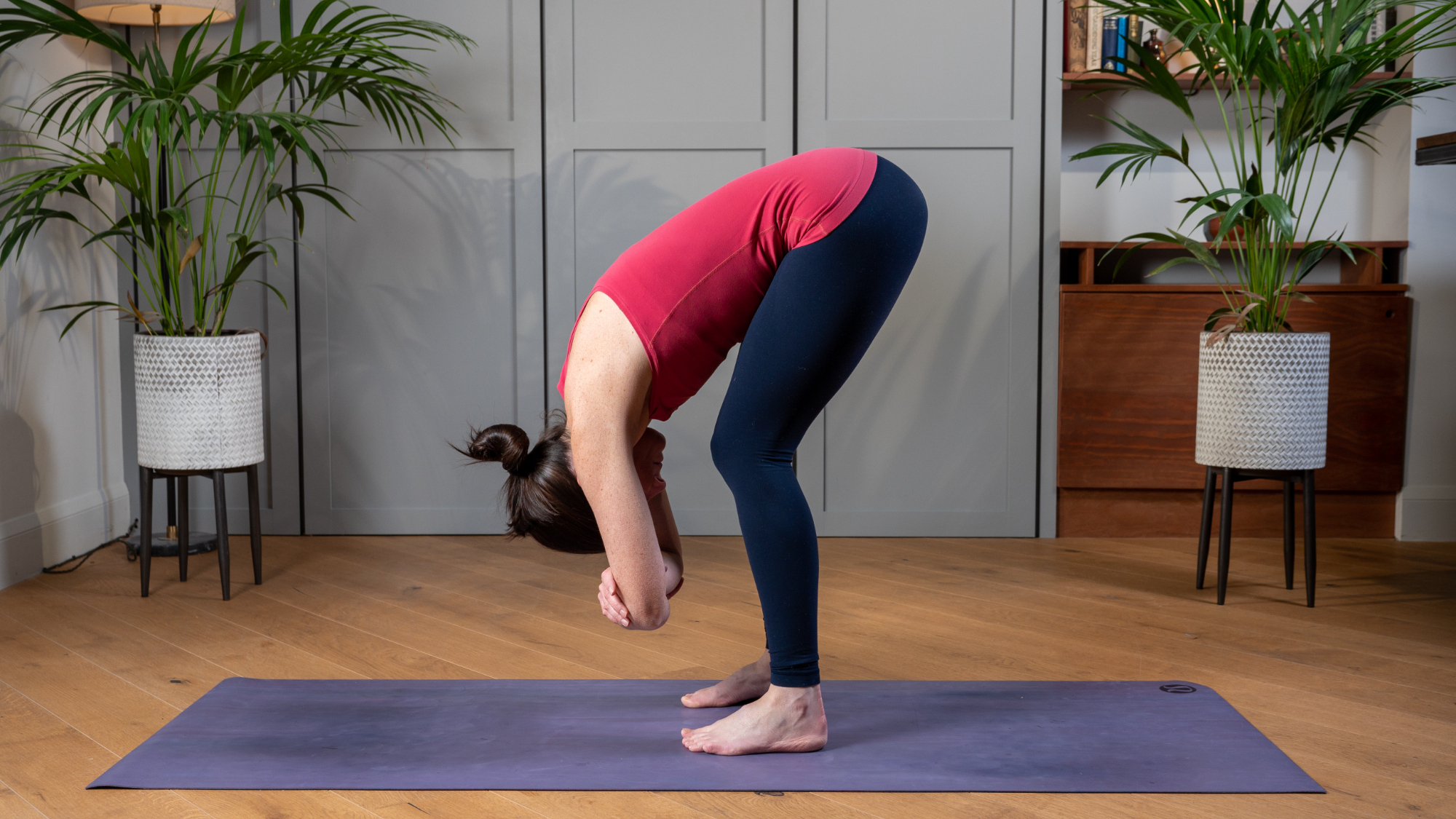
This stretching exercise is relatively straightforward but helps stretch your legs, including your hamstrings and calf muscles, and offers a release along your spine.
- Stand upright with a straight back and arms by your sides, with a slight bend in your knees.
- Bring your hands to opposite elbows, hinge at the hips, and fold your torso forward over your thighs. Your weight should be evenly split between both feet and legs.
- You can rock back and forwards a little, alternating your weight between your toes and heels.
- Stay in this position for five breaths.
7. Warrior 2
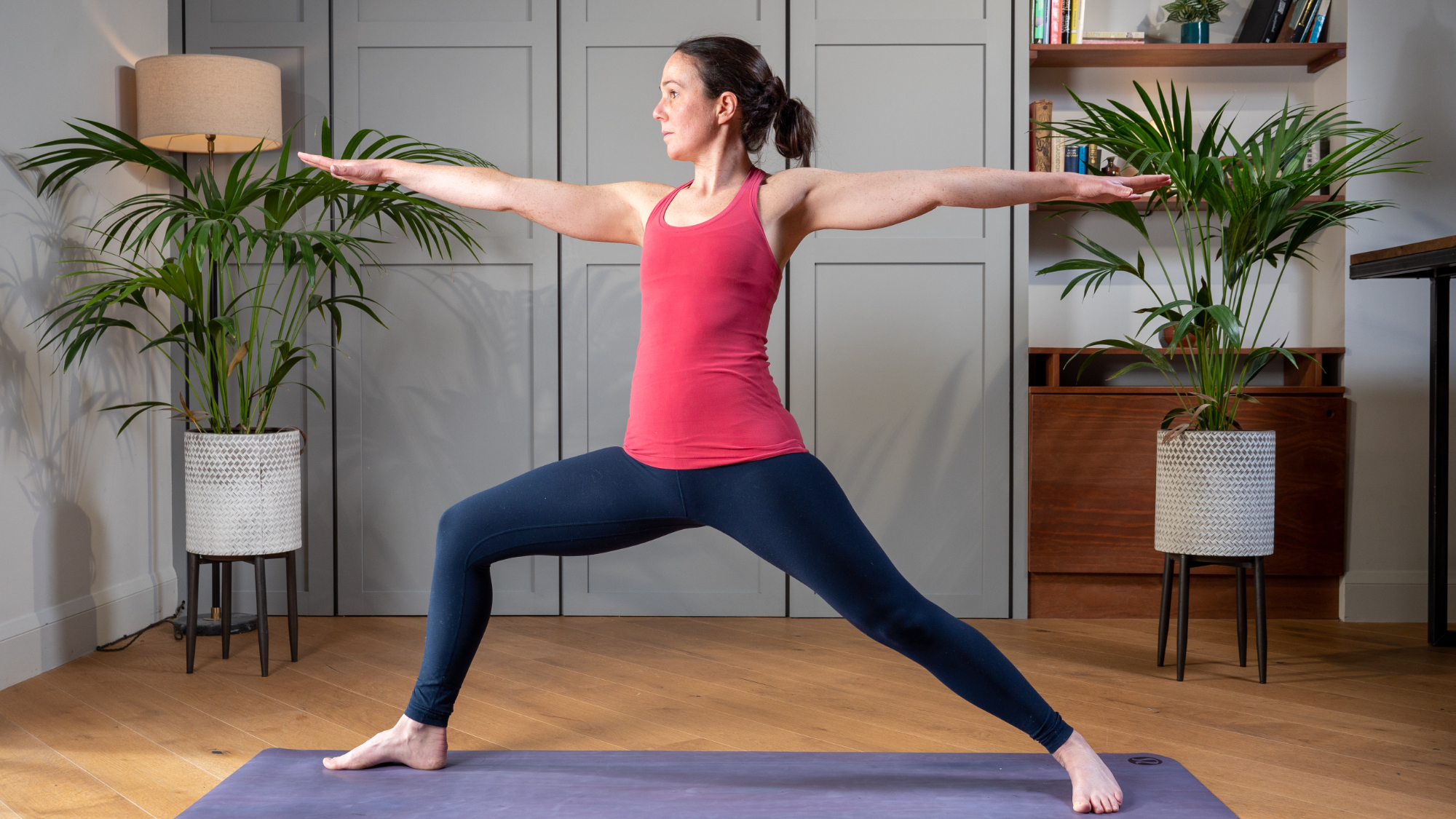
As you'd expect for a pose with this name, Warrior 2 is a great strengthening yoga pose. It develops your legs and opens your hips and chest, and improving your shoulder's range of motion.
- Adopt a wide stance, facing the long side of the mat.
- Turn your right foot to face the short edge of the mat, then bend your right knee over your right foot, moving your shin vertically and coming into a lunge.
- Open your arms so they're horizontal and parallel to the long side of the mat. Look towards your right fingertips, and stay here for five breaths.
- Return to the starting position, bringing your right foot in.
- Turn your left leg to face the other short edge of the mat. Repeat on the other side.
8. Triangle pose
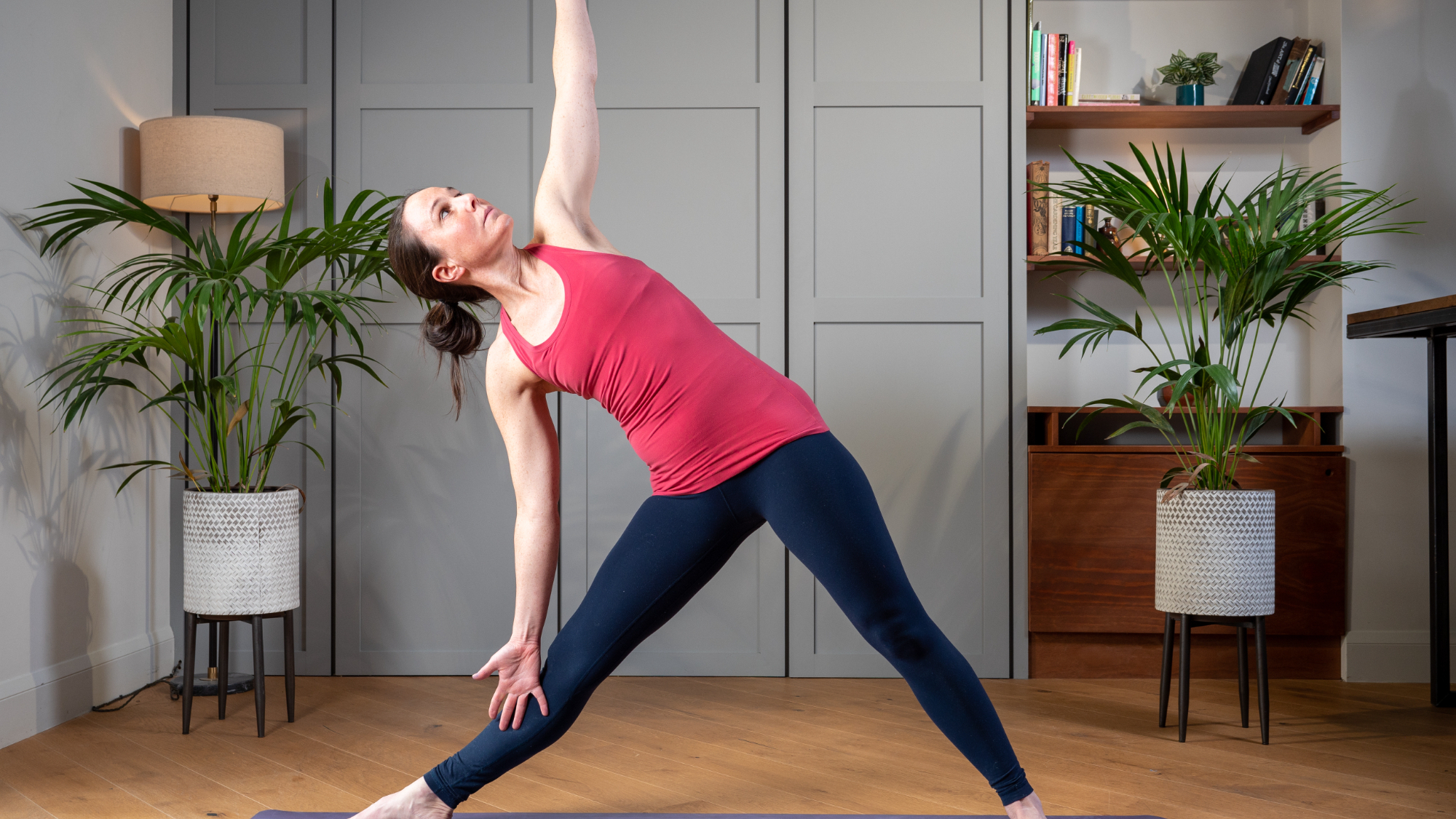
The triangle pose stretches your inner leg and hamstrings while opening the chest and improving the range of motion for the spine.
- Stand with your legs wide and turn your right toes to the short edge of your mat and turn your left toes in about 45 degrees.
- Straighten your right leg as you extend your arms wide and reach up and over, doing a cartwheel motion with your upper body. Your right hand should come to rest somewhere along your inner right leg.
- Turn your torso and left collarbone towards the ceiling and reach the left arm directly up, coming into a triangle shape.
- Stay in this position for five breaths, then bend the right knee to come out of the pose. Repeat on the other side.
9. Wide-legged forward fold
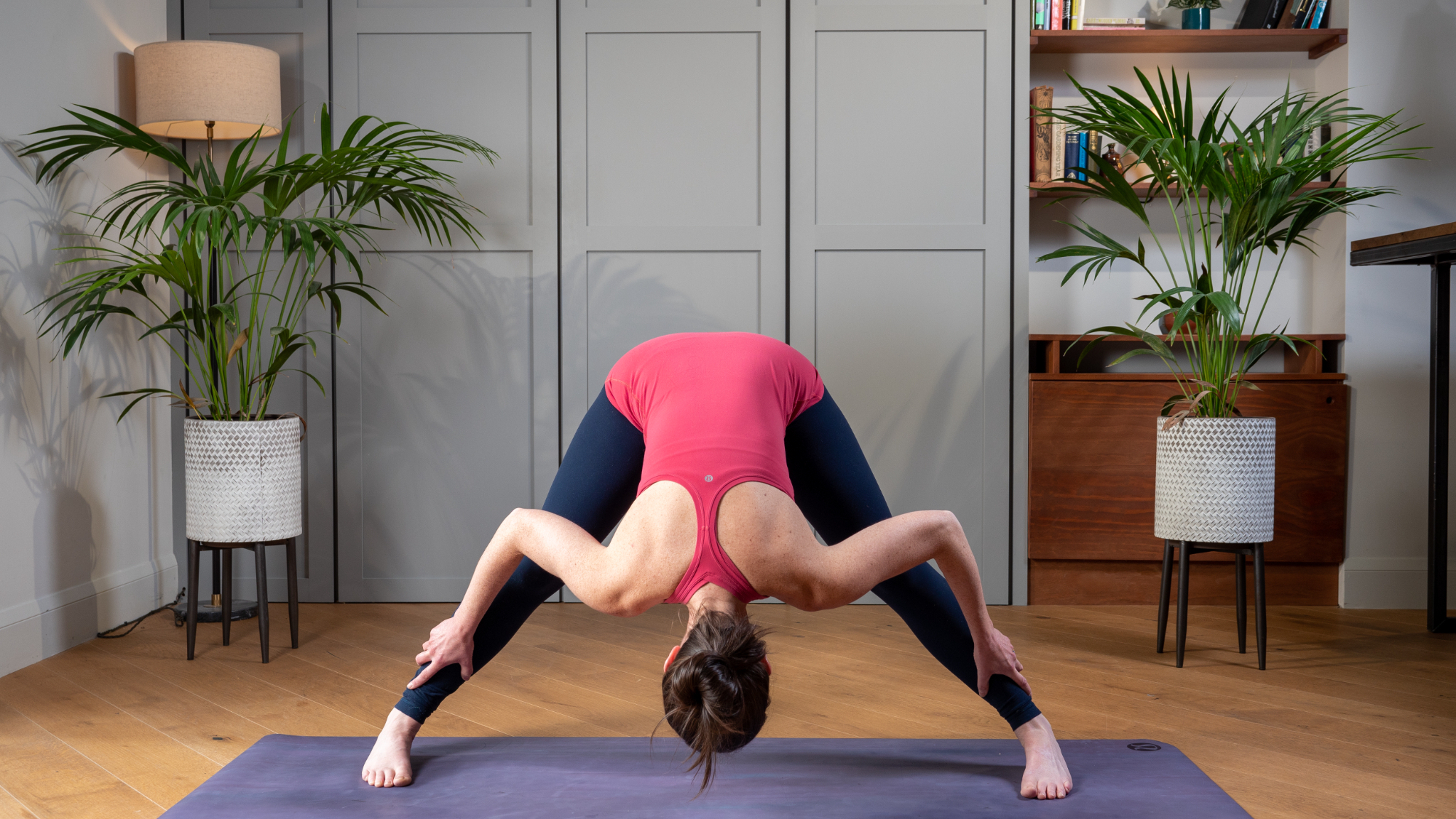
This soothing wide-legged forward fold is like the earlier standing forward fold but also helps stretch the back of your legs and offers a spine and neck release.
- Stand upright with a straight back and your arms by your sides. Your feet should be wide as you turn your toes to face the long edge of the mat.
- Bend your knees slightly and fold your torso towards the thighs, so the crown of your head releases towards the floor. Hands can come to your thighs, shins, feet, or the mat. Check the weight is evenly distributed through your feet.
- Stay for five breaths, then soften your knees and roll gently up.
10. Bridge pose
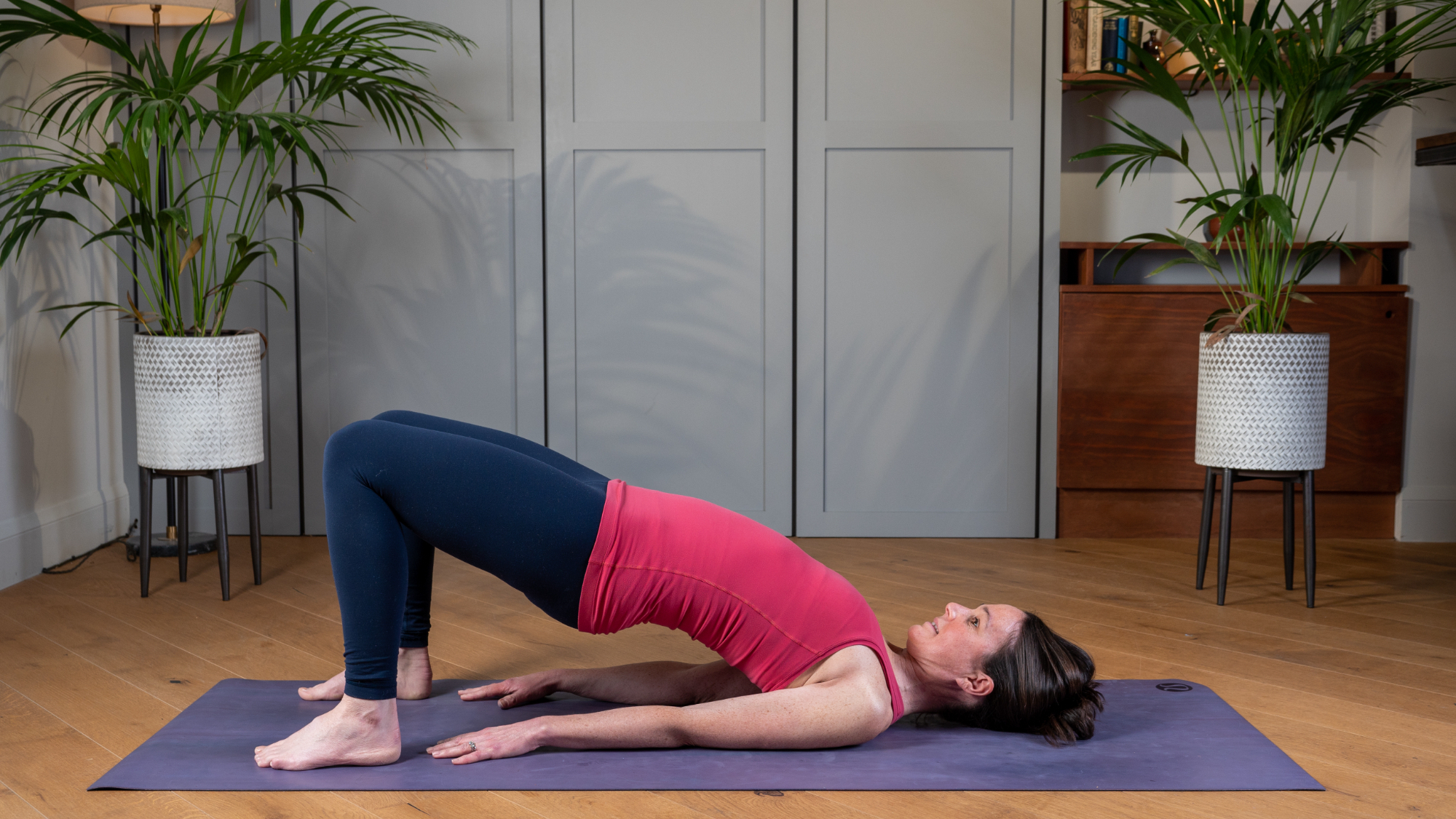
The bridge pose strengthens your legs, activates your glutes (the large muscles in your upper leg), lengthens your hip flexor and quads, opens your chest, and helps improve your spinal range of motion.
- Lie on the mat with knees bent and feet on the floor a little wider than your hips, with arms by your sides.
- Press into your feet and squeeze your glutes to press the hips towards the ceiling. Your feet should remain firmly on the floor as you lift your front body.
- Ensure your shoulders stay on the ground, and squeeze your shoulder blades together to broaden your chest.
- Hold this position for five breaths, then slowly lower to the floor.
According to Wood, after the sequence, you can stretch your legs out and spend a few moments lying on your back, focusing on your breathing. Resting here can also be the ideal time to learn how to meditate.
Yoga helps strengthen the connection between your mind and body physically, while meditation lets you focus on your breath so that you notice your thoughts but can let them pass by without getting distracted by them.
Is 10 minutes of yoga a day enough?
Felicity Wood explains that a little and often approach to yoga is the key to benefiting from the practice. "Something is better than nothing and 10 minutes of yoga is better than zero minutes," she says.
A 2023 study, published in the Human Factors journal, suggested that a 10-minute practice can help people reap the benefits of yoga. The study found that doing 10 minutes of yoga a day reduced physical discomfort and improved the mood of people working from home.
"Yoga works best when you do it consistently so if you can fit in 10 minutes a day, that’s better than doing it for a longer period once a week or once a fortnight," says Felicity.
"Duration is great but the thing that will make a significant difference is doing it regularly. It is good to have a longer session now and again because there is only so much you can do within a 10-minute session, but if you can only do a shorter session it’s beneficial."
When should you do your yoga practice?
Do your yoga practice whenever suits you, recommends Wood. "Find a time that works for you and is sustainable. Doing yoga first thing in the morning sets you up really well for the day—it can help you stretch out after sleeping and set your intentions for the day."
An early morning yoga session can be particularly useful if you are busy. "It’s easy to put things off if you are busy or tired from the day, so it can be helpful to get on your mat before that happens". says Wood. "But something is better than nothing, so if the morning doesn’t work for you, find a time that does.
"Try to be consistent by sticking to the same days and times every week—that way your practice will become a scheduled habit which will make it more sustainable over time."
How often should you do these stretches?
You can do these stretches as often as you like, but aim for little and often, particularly when you are learning new poses. "Repetition is really useful to help you to learn the postures, and practicing regularly throughout the week will have a greater impact on your body and mind," says Wood.
"If possible, try to practice this sequence two to three times a week, but if you only have time to do it once a week, it will still be beneficial," Wood explains. "You could do them every day, but listen to your body—if you are feeling any kind of discomfort or fatigue then rest."
What are the benefits of these yoga stretches?
These yoga stretches can have multiple benefits for your body. "This sequence will help increase your range of motion and flexibility, and also includes postures to help strengthen muscles," says Wood. "They can help with recovery after a run or workout and are useful for relieving stiffness."
They are also relaxing and calming and benefit your mind and how you feel. "These poses can help you build the body-mind connection and allow you to slow down and take some time out for yourself," Wood explains.
Annabel Lee is a freelance writer specializing in wellbeing with over a decade of experience. Her work has appeared in titles like Glamour, Business Insider, and Huffington Post. Although she no longer teaches, Annabel trained as a yoga and mindfulness teacher and is also a co-host of the Selfie Development podcast, which explores the world of wellness, self-development, and spirituality.